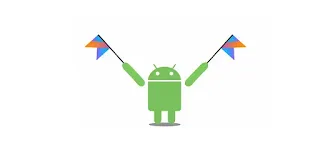23. Kotlin Fundamentals for Android - View Binding property delegation
🚀 Kotlin View Binding Property Delegation: Advanced Android Development Techniques
Welcome, Android developers! Today we'll dive deep into one of the most powerful features in Kotlin for Android development - View Binding Property Delegation. This technique revolutionizes how we handle UI element references, making our code cleaner, more concise, and type-safe.
📘 Understanding View Binding Basics
View Binding is a feature that allows you to more easily write code that interacts with views. When enabled, it generates a binding class for each XML layout file in your module, providing direct references to all views with an ID.
// Traditional View Binding
private lateinit var binding: ActivityMainBinding
override fun onCreate(savedInstanceState: Bundle?) {
super.onCreate(savedInstanceState)
binding = ActivityMainBinding.inflate(layoutInflater)
setContentView(binding.root)
}
🔍 Property Delegation: The Next Level
Property delegation in Kotlin allows us to extract common property management logic into reusable components. When combined with View Binding, it creates a powerful abstraction.
class MainActivity : AppCompatActivity() {
private val binding by viewBinding(ActivityMainBinding::inflate)
override fun onCreate(savedInstanceState: Bundle?) {
super.onCreate(savedInstanceState)
setContentView(binding.root)
binding.textView.text = "Delegated View Binding"
}
}
🛠 Implementing Custom View Binding Delegate
Let's create a custom property delegate for View Binding that works across different scenarios:
funAppCompatActivity.viewBinding( viewBindingInflater: (LayoutInflater) -> T ): Lazy = lazy(LazyThreadSafetyMode.NONE) { viewBindingInflater(layoutInflater).also { binding -> setContentView(binding.root) } }
💡 Advanced Techniques and Best Practices
- Always use lazy initialization for View Binding
- Prefer property delegation over manual inflation
- Handle lifecycle-aware view binding
- Use null-safety mechanisms
- Consider performance implications
🏋️ Practice Challenges
- Implement a view binding delegate for Fragments
- Create a generic binding function that works with multiple layout types
- Add null-safety checks in your custom delegate
- Optimize binding inflation performance
- Integrate view binding with dependency injection frameworks
🎉 Conclusion
View Binding Property Delegation represents a significant leap in Android development, offering type-safe, concise, and maintainable code. By understanding and implementing these techniques, you'll write more robust Android applications.
📱 Stay Updated with Android Tips!
Join our Telegram channel for exclusive content, useful tips, and the latest Android updates!
👉 Join Our Telegram ChannelGet daily updates and be part of our growing Android community!


Comments
Post a Comment